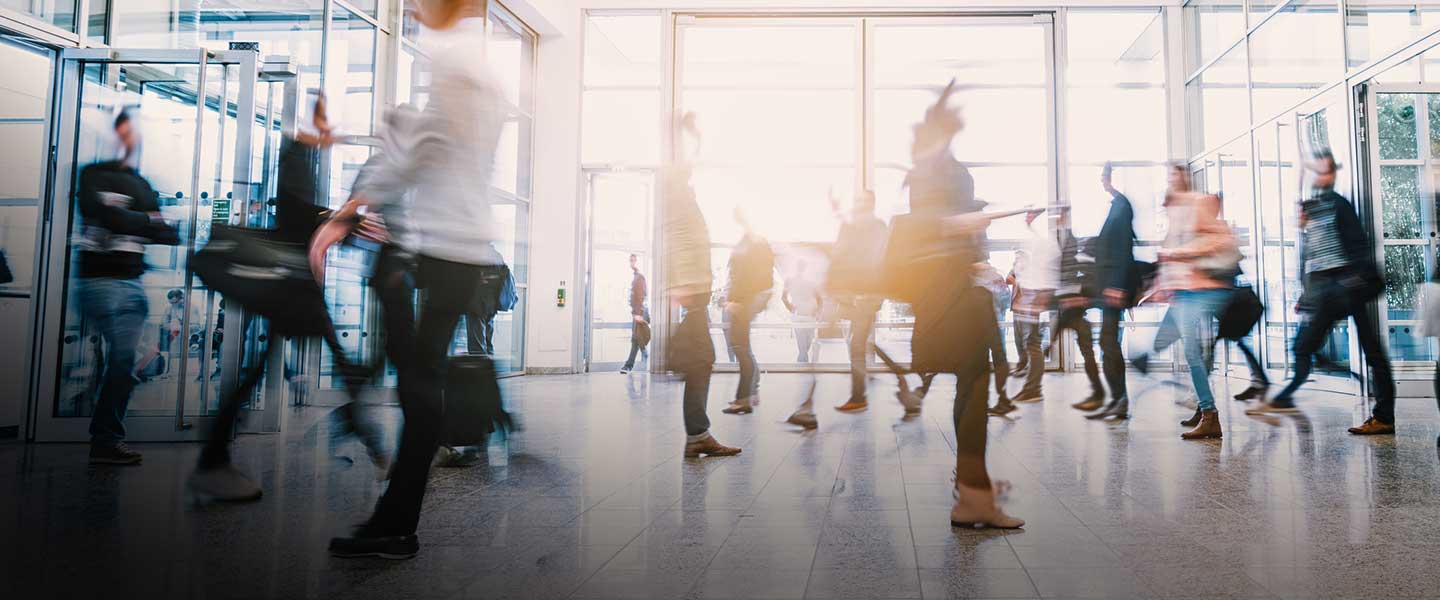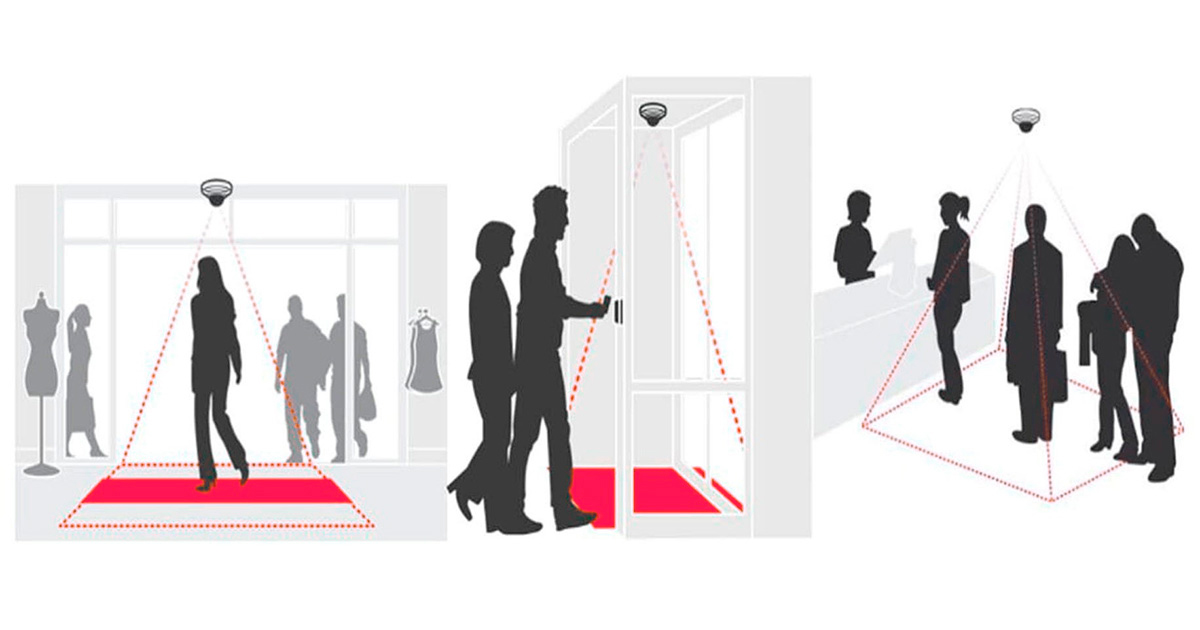People flow statistics is a method that calculates, detects and analyzes the number, flow path and time of a large number of people to obtain the flow trend and behavior pattern of the population, and is used for decision-making in public management, business operation, tourism and security.
People flow statistics usually use sensor technology or computer vision technology, such as face recognition, video surveillance, thermal imaging, infrared scanning, radar, WiFi probes and other technologies. These technologies can help people get information about the number of people in public places such as shopping malls, stations, stadiums, attractions, hospitals, schools, and offices, as well as the amount of traffic, range of activities, and length of stay.

The importance of pedestrian flow statistics to modern society can be explained from a number of perspectives:
1. Urban planning: comprehensively grasp the population flow of the city, and provide strong support for the construction of public transportation, roads and other infrastructure and urban planning.
2. Commercial operation: For shopping malls, supermarkets, hotels, restaurants and other commercial places, understanding the changes in passenger flow can effectively adjust the allocation of personnel and materials, and improve business efficiency.
3. Tourism services: For scenic spots, resorts and other tourist attractions, people flow management can avoid huge crowds and improve tourist experience.
4. Public safety: For important places, such as administrative areas, airports, stations, stadiums, etc., people flow statistics can be used to track different personnel background information and find abnormal behaviors and security threats.
People flow statistics have a wide range of applications in improving urban planning, commercial operations, tourism experience and public safety.


Lidar is a sensor that scans the surface of an object through a laser beam and measures the reflected light, which can obtain a high-precision, high-resolution three-dimensional model of the environment.
In terms of people flow statistics, LiDAR can more accurately detect and count the flow of people, velocity and action characteristics, including tracking the movement path of people, identifying the identity of pedestrians and calculating the density of people. In practical applications, LiDAR can be combined with computer vision technology to achieve more accurate and practical monitoring and analysis of human flow.
Lidar plays an important role in human flow statistics, and it has the following advantages:
High accuracy: LiDAR can provide high-precision measurement results with small error, spatial accuracy in centimeters, and can also better distinguish individuals in crowded areas.
High reliability: LiDAR can work under noise and light conditions, suitable for monitoring the flow of people in complex environments, and the average indoor/outdoor algorithm is suitable for different application scenarios.
Good real-time: Lidar can detect and analyze the flow of people and action characteristics in real time, and can be used for real-time personnel entry and exit management and security control, for venue applications, such as big data visualization of large occasions such as stations, airports, stadiums and so on.
Fine display: Lidar has three-dimensional modeling technology, which can expand the trajectory of the traffic flow in different directions, and improve the visual effect of the distribution pattern of the traffic flow through the analysis of the dynamic characteristics of the people.
With the application of LiDAR technology, comprehensive information such as human flow, velocity and movement characteristics can be quickly and automatically analyzed, which provides support for the flow management and environmental research of large transportation hubs such as subway, high-speed rail and airport. Through large-scale collection and analysis of the data framework, improve the grasp of large-scale site personnel behavior and the formulation of logistics strategies, further optimize the efficiency of crowd flow organization, reduce costs, improve safety, improve personnel task allocation, and ultimately improve travel and service experience.

In a human flow detection system, liDAR detects objects in the environment, including the human body, by firing a laser beam and measuring the reflected light. Its detection workflow is roughly as follows:
Laser emission: LiDAR emits a laser beam through a laser transmitter, which shines on the surface of an object in the environment.
Reflected light reception: When the laser beam shines on the surface of the object and is reflected, the liDAR receiver will receive the reflected light signal. By measuring the time, offset, power and other parameters of the reflected light, the LiDAR calculates the distance between the object and the Lidar and the coordinates of the object.
Data processing: LiDAR generates a three-dimensional model of the environment by measuring and analyzing the reflected light. For detected human bodies, LiDAR can extract their coordinates and spatial information, as well as their movement trajectories.
Demographics: Lidar can count information such as the number, density, flow and speed of the population by monitoring the position and movement of the human body. For public places, such as stations, stadiums, densely populated areas, etc., interpersonal distance and density can be monitored to ensure the safety of people in the place.
SenkyLaser Recommended model:
The MVR3EC laser ranging sensor has technical advantages for this application:
1. Large measurement range: The use of TOF(time-of-flight Time of Flight) technology, can achieve 0.3 to 14 meters /28 meters of high-speed ranging requirements, suitable for indoor and outdoor scenes, can meet the needs of different application scenarios.
2. High precision: MVR3EC laser ranging sensor can achieve centimeter-level accuracy, through rigorous temperature, ambient light and linear compensation, accurate distance information can be obtained in different environments.
3. High frequency: the laser ranging sensor can meet the needs of high-speed ranging, and the rate is adjustable from 10-200Hz, which greatly improves the efficiency of data acquisition.
4. High accuracy and reliability: the resolution of MVR3EC is 10mm, and the accuracy is ±0.5m(0.2~7m); ±1.5%(7~14m), can stably and accurately record the flow of people data.
5. Compact size: Miniaturization suitable for embedded installation, support for secondary development, MVR3EC can be built into the overall structure, does not take up too much space.
6. Safety: infrared 940nm VCSEL light source, in line with a class of safety laser standards, can be used in crowded environments, will not cause harm to the human body.
7. Diversified data output formats: The laser ranging module provides HEX and ASCII UART serial port output data formats for easy docking with different devices.
8. Real-time feedback: The sensor can feedback the position and distance of the measured target in real time, which is convenient for users to obtain data, and carry out real-time data analysis and processing.
9. High cost performance: The laser ranging sensor has a high cost performance, which can achieve a balance between cost and benefit, and the value is fully reflected.
The MVR3EC laser ranging sensor has many advantages such as high precision, high speed ranging, good safety, strong adaptability, small size, easy installation, diversified data output format, real-time feedback, high cost performance and so on, and can be widely used in the field of flow statistics, flow monitoring, intelligent retail and so on.